Quick Summary
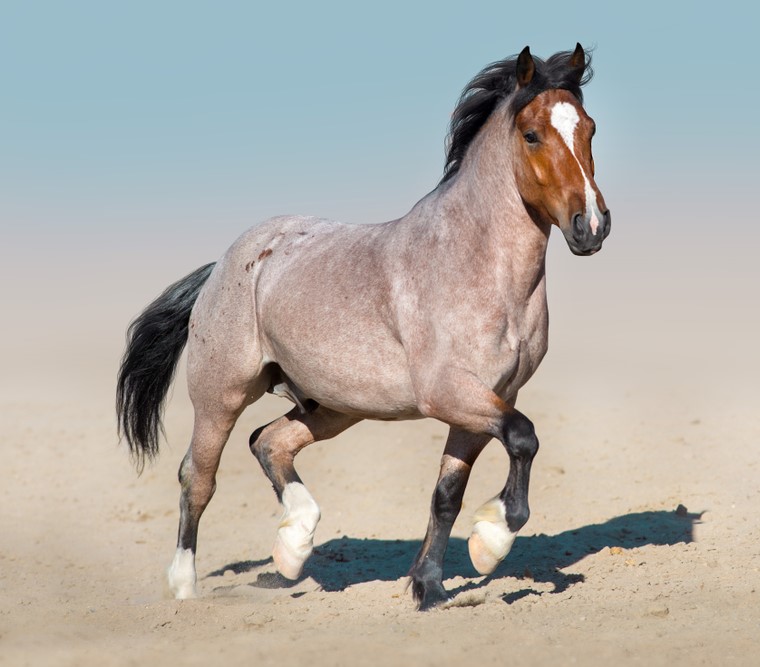
Click here for Price and Turnaround Time
Phenotype: Classic roan is a white patterning trait characterized by intermixed white and colored hairs in the body while the head, lower legs, mane, and tail remain colored.
Mode of Inheritance: Autosomal dominant
Alleles: N = Normal, Rn = Classic Roan
Breeds appropriate for testing: Many breeds
Explanation of Results:
- Horses with N/N genotype will not have the classic roan pattern and cannot transmit this roan variant to their offspring.
- Horses with N/Rn genotype will have the classic roan pattern. They may transmit this roan variant to 50% of their offspring. Matings with N/N genotype will result in a 50% chance of producing a roan foal.
- Horses with Rn/Rn genotype will have the classic roan pattern. They will transmit this roan variant to all of their offspring. Matings with any genotype are predicted to produce all roan offspring.
Sample Collection
Horse DNA tests are carried out using cells from the roots of a hair sample (roughly 20-40 hairs).
1. Grab about 10 hairs at the base.
2. Wrap the hairs around your finger and give it a quick pull.
3. Check the ends to make sure the pulled hairs have roots.
4. Repeat the process until you have collected about 20-40 hairs with intact roots.
5. You can choose different places on the mane or tail. NOTE: For foals, we recommend pulling all hairs from the tail only.
6. Tape the hairs to the submission form and fold the form along the dotted line to protect the sample. Do not use ziploc bags as they can cause condensation that allows mold to grow on the hair.
7. Place the folded form containing the sample in a paper envelope and mail it to the laboratory.
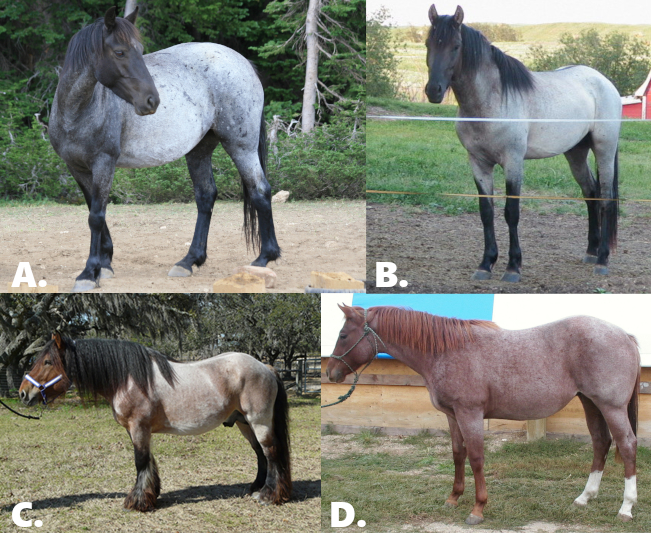
Classic roan is a specific white coat patterning in horses characterized by intermixed white and pigmented hairs in the body, while the head, lower legs, mane and tail remain fully pigmented. Roan horses are born with the pattern though it may not be obvious until the foal coat is shed.
The white and pigmented hairs are often evenly distributed in horses that inherit classic roan, which can differentiate this from several patterns that look similar and are also referred to as roaning. Other white spotting patterns with roaning tend to be more uneven in the distribution of white hairs and do not typically extend through the entire length of the body (unless multiple patterns are present). These include white patterns such as varnish roan in horses with leopard complex spotting, rabicano, and frost, among others. The genetics behind most of these patterns remain unknown to date, except for leopard complex spotting.
Research at the VGL identified a haplotype, meaning a combination of DNA markers, that is associated specifically with the classic roan coat pattern (Figure 1). The classic roan haplotype is found in a variety of breeds such as Quarter Horse, Paints, Peruvian Paso, Paso Fino, Welsh Pony, Miniature and Belgian, but it has not been detected in Thoroughbreds or Arabians. Given the existence of other white spotting patterns that also display roaning, it is possible for a horse to have what appears to be a roan phenotype but not have the classic roan haplotype tested by the VGL.
While it has been suggested that classic roan is homozygous lethal, production records for Quarter Horses document the existence of classic roan Quarter Horses that always produce classic roan foals. Importantly, our DNA test has confirmed homozygosity in the genomic region that contains the classic roan haplotype in horses that are reported to be healthy, indicating that classic roan is not homozygous lethal.
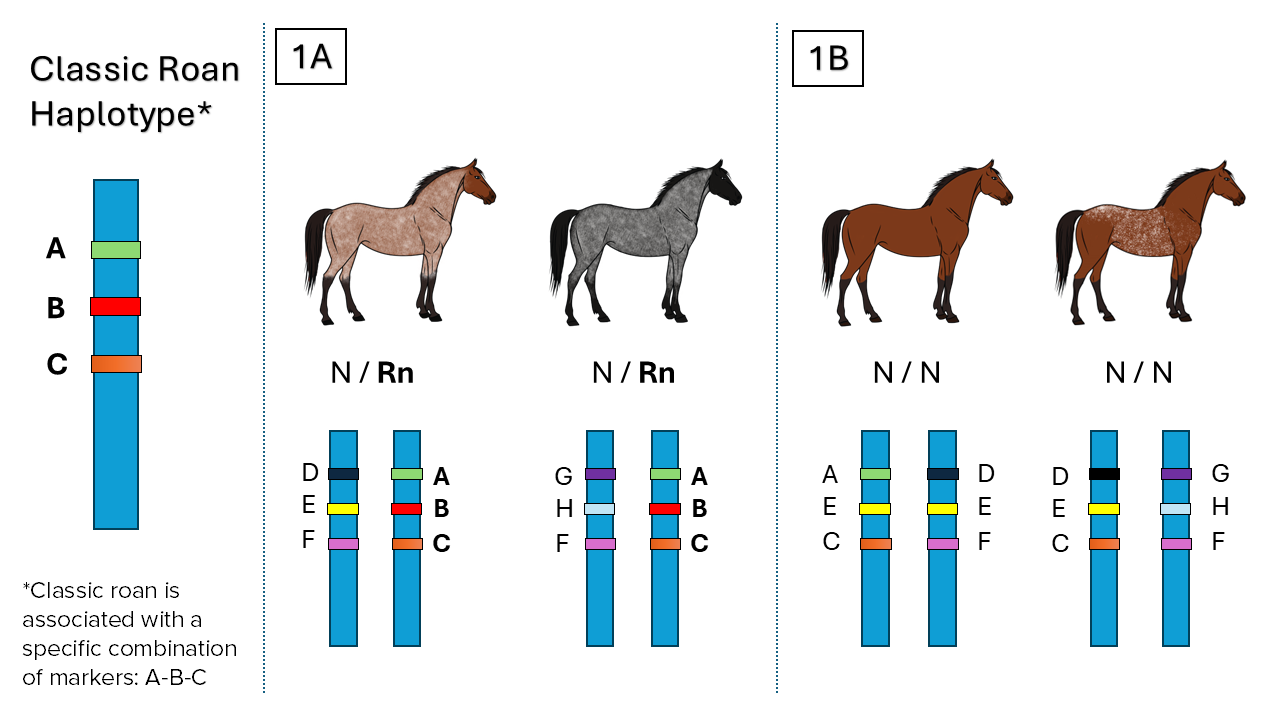
Please note that it is possible for two classic roan horses, who are heterozygous for roan (N/Rn), to produce a horse that may have a roan-like coat pattern but not have the classic roan haplotype (Figure 2). The cause of a horse like that in Figure 2 is still not known.
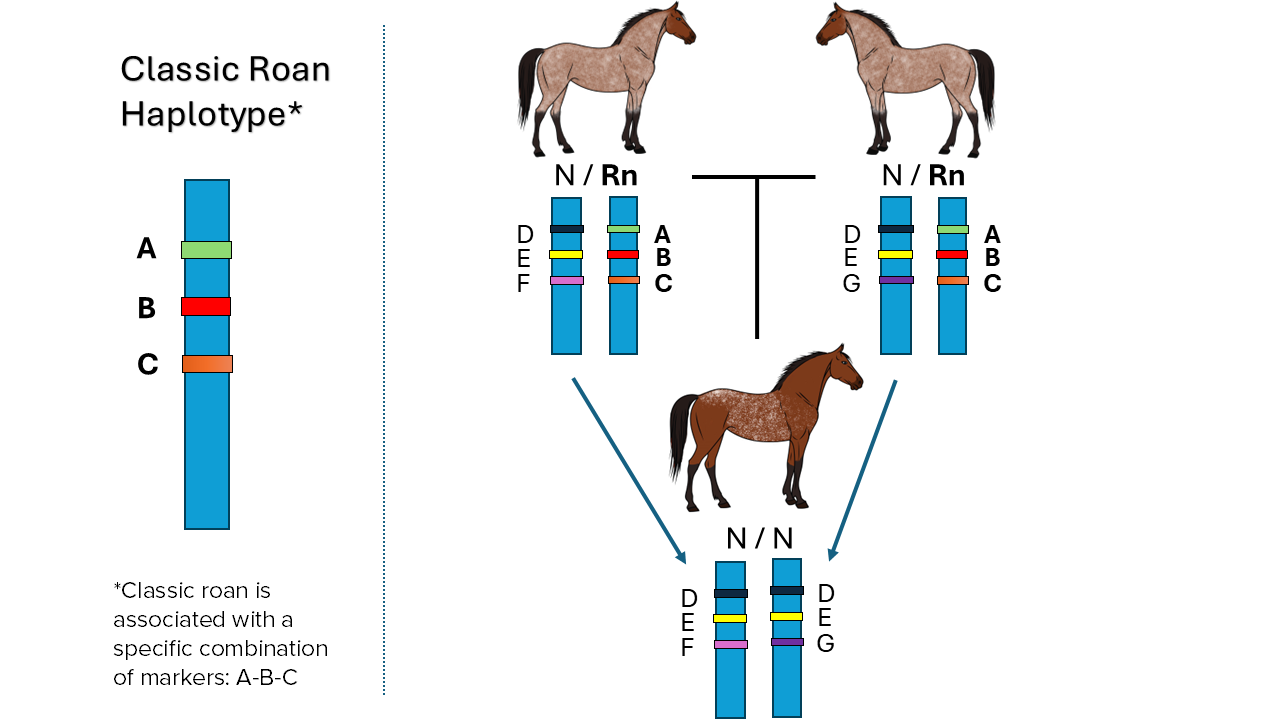
Note: Roan is inherited as a dominant trait but the specific mutation has not yet been identified, so there is no direct test for roan. VGL has identified DNA markers in Quarter Horses, Paints, and other breeds associated with the Roan phenotype that can be used to determine if a horse has the roan allele and what is its zygosity.
The following additional materials should be included to provide a more comprehensive analysis (strongly recommended but not required):
- Hair sample from at least one parent (There is no charge for submitting a sample from the parent(s); there will be no report issued for the parent(s))
- Color photo of the subject horse, labeled with the horse’s name
- Three generation pedigree with color and patterns listed for each horse in the pedigree
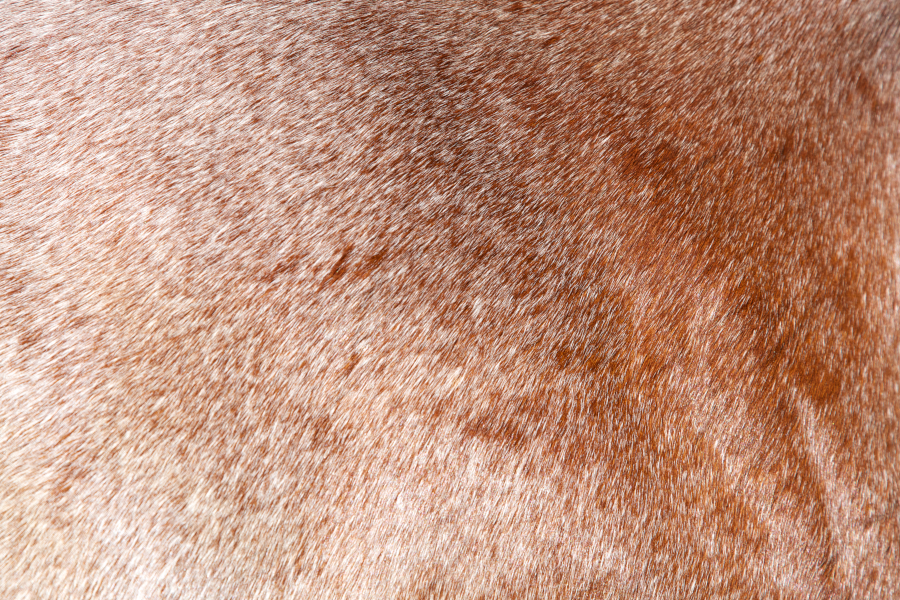

 Roan Zygosity Test
Roan Zygosity Test